Let us all take a trip down memory lane to our youth, to the heyday of the DC animation universe, in the era of DC’s mega-blockbuster live-action films. You must recall Batman and Superman, and perhaps even the Batman from the future, but do you recall this individual?
This is Infiltration Unit Zeta, a former assassin who has gone good and is looking for the truth. And this is Ro, who is with him. But from where do they originate?
What if I told you that no one really remembers a Batman spinoff series? This series, which was based on the Batman Beyond supporting character Zeta, failed to gain traction and was cancelled after only two seasons. Strangely enough, despite being dubbed “the oddest DCAU creation” to date, it continues to draw fans of all ages.
What was the show all about?
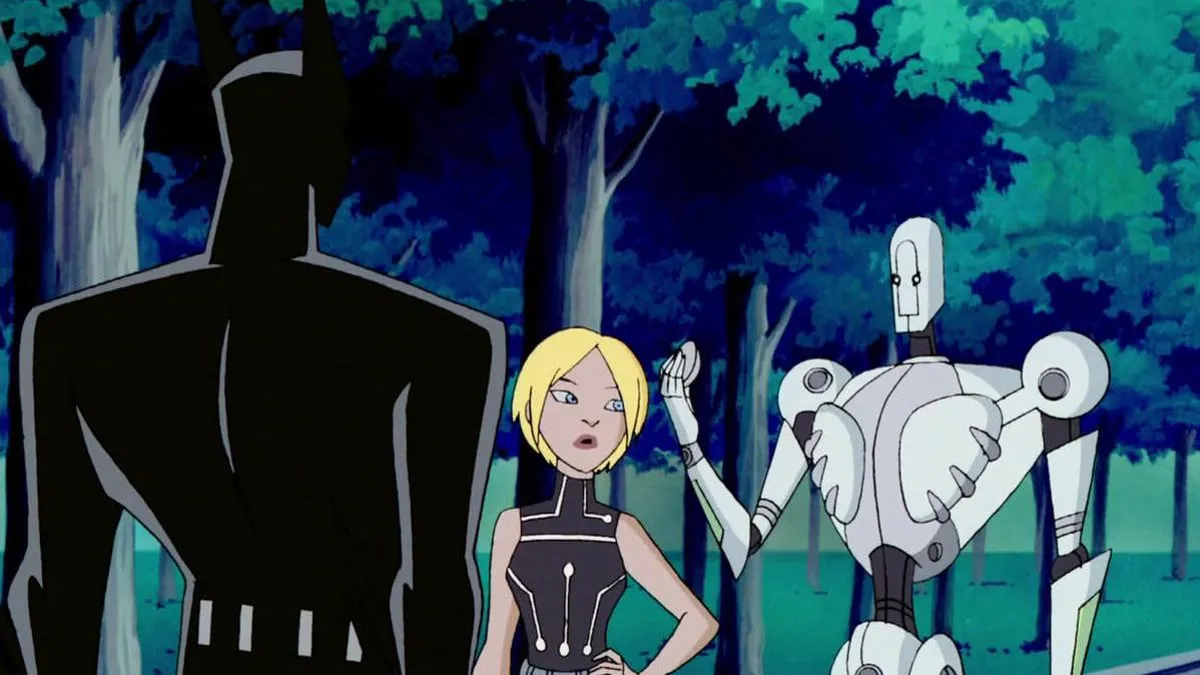
The Zeta Project, written by DC comics writer Bob Goodman, ran for two seasons from January 2001 to August 2002, totaling 26 episodes. It chronicled the exploits of Rosalie Rowan, a wanted fugitive, and Zeta, a murderous yet intelligent robot.
The Batman Beyond episodes “Zeta” and “Countdown” introduced the character Zeta as an assassination-focused US government infiltration force. In the episode “Zeta,” he appears to be a middle-aged lady who, by herself, manages to escape intense fire from NSA agents. However, it quickly becomes clear that Zeta is more complex than first appears.
He confesses his true character to Maxine Gibson, his hostage, later in the episode when speaking with her. “I was created for one purpose — to destroy. I do not wish to destroy anymore.” The entire premise of the Zeta project is encapsulated in the phrase “a killing machine that becomes self-aware.”
With programmes like Batman: The Animated Series, Superman, and Batman Beyond, the DCAU had gained critical success by the dawn of the twenty-first century. However, there appeared to be an increase in anxiety among the WB executives. They said that these programmes, which were meant for kids, were far too sophisticated and that most of their viewers were teenagers and adults. The studio was searching for something that may appeal to a younger audience as a result of having the mentality of “out with the old and in with the new.”
And this is precisely when head producers Bruce Timm and Alan Burrett suggested the side character Zeta to be developed as a spin-off, based on the incredible reviews the Zeta episode received. This idea was pitched to the WB brass by Goodman and a spin-off series with the likes of ‘Fugitive with a robot’ was envisioned.
Exploring the first few episodes and the overall story arc
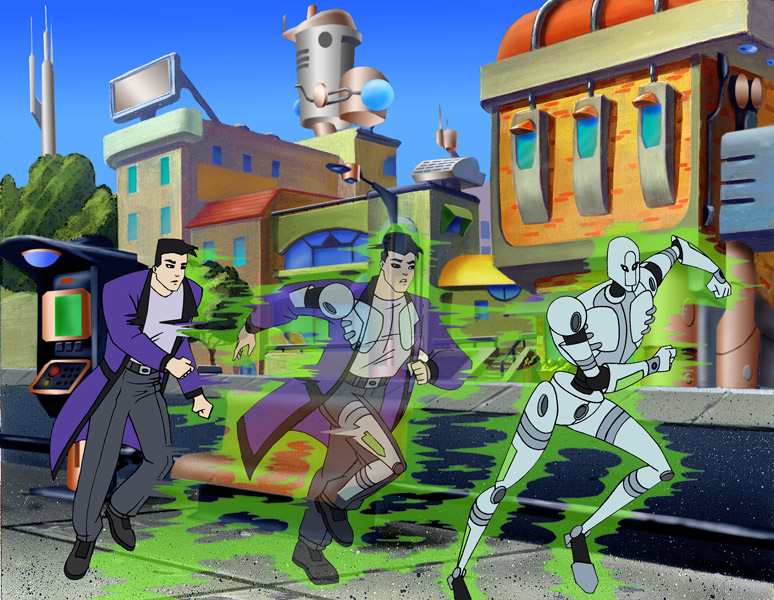
Much like Batman Beyond, The Zeta Project was set in the distant future. It centred on a synthoid, Zeta, that could essentially shapeshift. Inspiration was taken from TV shows such as Gene Roddenberry’s the Quester Tapes and the 1970s tv show The Incredible Hulk for the characterisation of Zeta. The series follows Zeta and an orphaned teenager Ro on a quest to prove Zeta’s innocence. Ro and Zeta are basically on the same path, looking for their families, Ro looking for her lost brother, and Zeta, looking for his creators.
The pilot episode sets things into motion at the very start. We see that Zeta is on the run from the NSA and on his journey, he saves the life of a runaway teenager called Ro Rowen. Ro then assists Zeta in his escape from the NSA. Soon, Ro finds out that sticking with Zeta is highly beneficial for her, as Zeta has access to unlimited money. Ro agrees to help Zeta, or “Zee” as she likes to call him, in exchange for a sum of 5000 creds. Further, we see Ro’s role in the series develop exponentially as she persuades Zeta to look for his creators.
If Zeta can find his creators, he can prove to the NSA that his behaviour was built into him, and thus he is innocent. They hatch a plan, Ro will distract the amateur Agent West so that Zeta can break into the NSA van and download information about his creators from it. But the execution goes slightly askew, as Ro is unable to distract Agent West and instead, has to rescue Zeta from the botched mission. Ro decides to stick with Zeta until he finds his creators.
In the second episode, Zeta and Ro are on a quest for Dr. Aroyu, one of Zeta’s creators. Dr. Aroyu is under the notion that Zeta is out to kill him, but Ro is able to convince the Doctor to meet Zeta just once. But when Zeta goes to meet him, he realises he has walked right into one of Agent Bennett’s traps. The trap then misfires and puts the Doctor in mortal peril and Zeta saves him just in time. Now having earned his trust, Zeta receives from Dr. Aroyu his holy grail that he’s been in search of. The man Zeta is looking for is named Dr. Selig.
The story proceeds with Zeta and Ro searching for Dr. Selig at a science convention. Here, they don’t find Selig but meet Bucky Buenaventura, 12-year-old genius who has invented a universal remote control. With this remote, he takes control of Zeta and uses him to play pranks at the event. He also uses Zeta against Dr. Tannor and attacks him for revenge. The crisis is solved when Ro manages to throw off Bucky’s spell.
Next, when they find themselves in a museum on the trail for Dr. Selig, we witness Zeta’s Little Zee form for the very first time. They rescue a mother and child from a fusion reactor and escape from the NSA just in time. When Zeta catches a single glimpse of Dr. Selig, the stakes get higher than ever.
Following this, we see Zeta accidentally intercept a mission set out for another Infiltration Unit. Zeta decides it is up to him to put an end to this assassination, and in order to do so, he must fight Unit 7, an improved model of Zeta. With the help of Ro and recently turned ally Bucky Buenaventura, Zeta is able to defeat IU7. But as a result, IU7 selects Zeta as its next target.
The rest of season one loosely follows Zeta and Ro as they run from The NSA. Zeta doesn’t come any closer to meeting his creator and neither is Ro able to trace her brother. But the 8th episode titled “Shadows” stands to be a fan favorite, because, turns out, it takes place in Gotham city itself. In this episode, we see Zeta and Ro in a shopping mall in Gotham City, where Ro tries to get Zeta into video games.
IU7 that has been on the hunt for Zeta, adopts a hologram of Zeta and approaches Ro to trick her into revealing Zeta’s coordinates. Ro realises that IU7 is a fake but cannot stop him from attacking Zeta. The fight completely annihilates the mall, Zeta manages to save everyone but Ro, who has to be taken to the hospital. This takes a significant mental toll on Zeta, who now believes that he is harmful to Ro. Meanwhile, Batman follows the destruction of the mall to Zeta in the hospital.
On seeing Zeta next to an unconscious Ro, Batman believes that Zeta is about to kill her and breaks in to stop him. A fight ensues which is only halted when a newly awakened Ro reveals the truth. But even this isn’t enough to curb Batman’s suspicions. Soon we see that IU7 has found Zeta and breaks into the hospital room. Batman now fights on Zeta’s side, after finally seeing the situation for what it is. IU7 is destroyed by the two and Batman departs after a heartfelt apology to Zeta. Zeta tells Ro that they must separate, but Ro refuses to leave. She explains that despite the dangers, she has been having the most fun she’s ever known.
And this ending makes it clear that the two will continue to stick together. A classic ‘found family’ trope executed in the strangest setting, this is a very good example of the multiple inexplicable aspects of the show that makes it a fan favourite.
Season two starts with Zeta tracking down Dr. Segil at a cryogenics lab called Cryobin. An explosion in the lab causes Zeta to save his life, but due to the approaching threats of the NSA, he does not get a chance to talk to him. The rest of the season sees Zeta, Ro and at times Bucky, escape the oncoming threat of the NSA while pursuing Dr. Segil. Zeta even manages to reunite Ro with her brother Casey. But the two have to say goodbye very quickly, when the network that works for the NSA, tips them on Zeta’s location.
Season two ends on a major cliff-hanger that has bugged the audience for the last two decades. Zeta and Ro eventually find Dr. Segil and he explains to them his intentions with Zeta. He tells them about the module he had fitted Zeta with that would hopefully make him rethink his program design.
Segil himself wasn’t such a fan of building weaponry. But Zeta was disguised during this conversation and never got a chance to tell Dr. Segil that his plan had actually worked. Dr. Segil is seen to die in a plane crash in the ocean by Ro and Zeta. But just before the credits roll, we see an ‘androidesque’ hand grasp for air out of the water and it regenerates its own skin.
The overall premise of the show can be compared to much popular media. Anyone can see the resemblances between Robocop and Futurama, but another beloved and age-old story comes to our mind when dissecting the story of Zeta: Frankenstein and his monster.
Think about it, it all fits… a scientist that has created a theoretical anomaly and the creation that seeks to find him. In other words, although The Zeta Project may be one of the strangest shows in the DC animated universe with its cyberpunk aesthetic, slapstick humour and at its core, a philosophical dilemma, it is still a very simple story of belonging and the search for meaning in one’s life.
Looking back at some of the memorable characters from the show
Zeta

Infiltration unit Zeta, our protagonist, is voiced by none other than Diedrich Bader. Zeta is an artificial intelligence robot, better known as a ‘Synthoid’, and was designed to target and take down specific people by the NSA. Zeta can disguise himself holographically as any individual he has seen and can even access their memories through physical contact. He can also create custom appearances purely out of memory.
Zeta was invented with many inbuilt weapons, most of which he denounces in Batman Beyond’s Zeta episode. But he still has saw blades and cutting lasers built into his arms and has extensible legs. He carries some non-fatal tools such as handheld welding lasers and a computer interface. He also exhibits great physical strength and is capable of self-repair.
Zeta can also go long periods of time without shutting down, all thanks to its power cells that draw hydrogen from the air and convert it into fuel.
One of the main architects that worked on its design, Dr. Eli Selig, had placed a module inside Zeta’s head. This module contained the catalyst for a possible conscience and Dr. Selig hoped to see Zeta evolve as a thinking being.
Rosalie ‘Ro’ Rowan
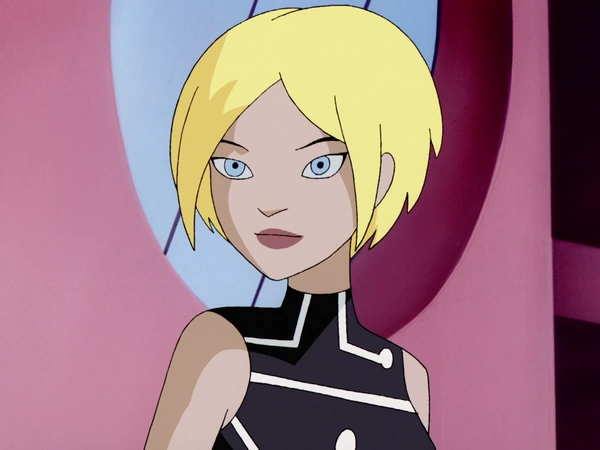
Now coming to the other half of our puzzle, Rosalie Rowan is a 15-year-old orphan and a loyal sidekick to Zeta. Played by Julie Nathanson, we often see her as a highly sarcastic character that acts as an older sister to Zeta and helps him in his search for his creator. But how did she get there?
As kids, Ro and her brother Casey were entrusted to their grandparents by their mother, for no clearly discernable reason. Ro grew up with an adventurous spirit, earning herself the nickname “Little Bulldozer” from her grandfather for her innate desire to plough through any obstacle to get what she wanted. But after their grandparents passed away, the two children were helplessly separated and put into foster homes.
Ro was given to Wendell and Mary Morgan, but right from the start, she had suspected that she wouldn’t fit in. They even once told her that she would never amount to anything. Eventually, Ro ran away to a girls’ home in Spring City, Maryland. She soon got into trouble for standing up to the bullies and got stuck on restroom cleaning duty, and during this punishment, she realised she was tired of her life there.
She broke a window lock in the restrooms and was able to escape the home. But alas, a guard had spotted her and chased her down. Miraculously or cursedly, she was rescued by a local gang leader called Slam. Ro was promised a new life in exchange for her initiation into the gang.
She had worked for the gang for some time before she was tasked with robbing a credit bank. Ro refused to comply and as a result, Slam raised his gun to shoot her. At this very moment, Ro saw herself be rescued by an unknown man. The man was shot but did not drop dead, revealing his true nature of being a Synthoid. Ro then helped this robot escape by helping him hotwire a hovercar. While they hid in a gutter, the robot introduced himself to Ro as the one and only Zeta, and thus began their beloved adventures.
Special Agent James Bennet
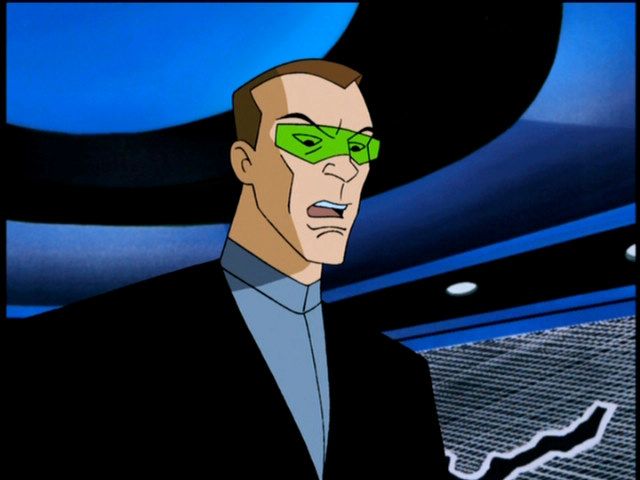
Special agent James Bennet of the NSA spearheaded the search for a Zeta gone rogue and his fugitive companion Ro. Always only a step behind, James Bennet quickly became the main antagonist for the duo. He believed that Zeta had been hacked into and rewired by a Terrorist Organisation named Brother’s Day. He has even told Zeta that all he’s trying to do is help and fix his insides.
Despite his strict professionalism, he is seen to disobey orders himself and regularly abuse his authority whenever it suits him. Bennet is also aware that Zeta was fitted with an extra module, but he shows no intention of believing this could have affected Zeta’s behaviour.
Dr. Selig
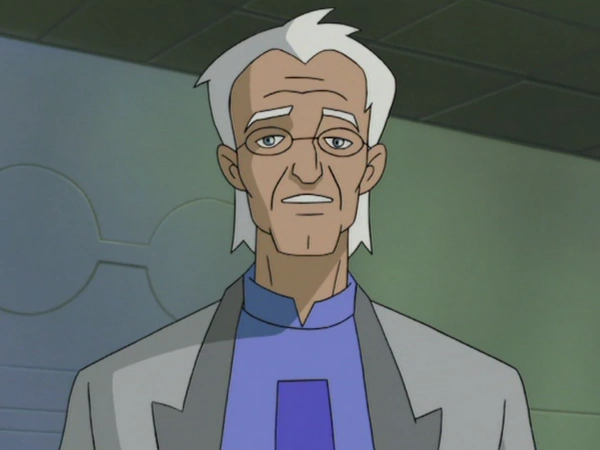
Dr. Selig is the legendary creator that Zeta is on the search for. Selig had co-founded the Sorben Institute with Donald Tanner in the 2030s and was the head of Project Zeta and the main architect behind Infiltration Unit Zeta.
Marvelous Verdict: A hidden gem that could have been a remarkable live-action movie!
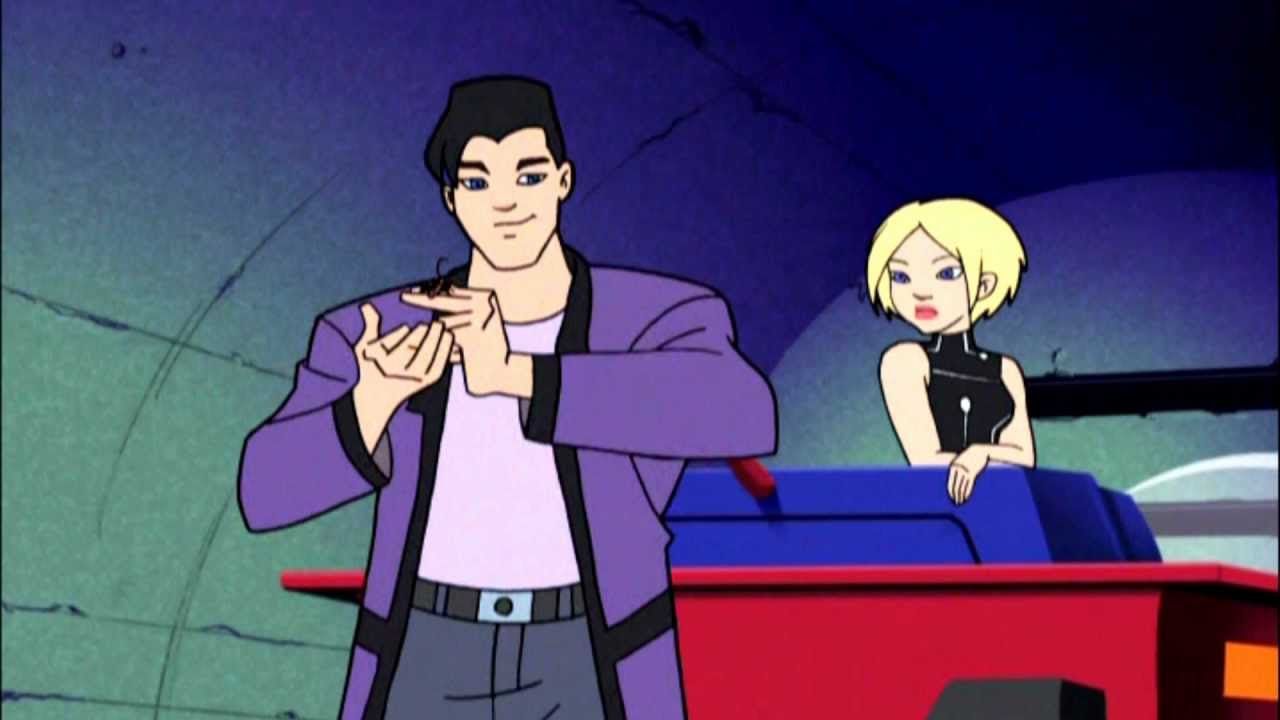
In 2020, Bob Goodman confirmed that Jon Schneider and he were in talks to revive The Zeta Project as a live-action reboot. But unlike the animated series, this project would not be modelled after The Fugitive. Here, Ro would be an FBI cybercrimes agent and along with Zeta, they would solve tech crimes every week in a procedural.
Now, whether we will get to see that anytime soon is a question best left unasked. But a lot can be said about what this project may bring to its fans. Although the Zeta Project did not have a very expansive fanbase, it did have eager ones, and they all seem to have come to a similar consensus.
They thought the animation was tacky, but not too sore on the eyes. They thought the plot-holes were endless and avoidable. But in this one regard, they all agreed. They believed the character of Zeta to be the driving force that always brought them back to the show. They loved the anti-hero that was born into a meaningless existence but simply chose to forget what he was taught and spent his time in the pursuit of a moral conscience.
And this is something a Live Action reboot should really take into account. With a rich character premise in their hands, Goodman and Schneider don’t have much work to do in order to create an effective and engaging storyline. They could experiment with edgy sound design to really bring out the cyberpunk set-up of the show, or they could make the show look like it was sketched by Bruce Timm himself with the help of witty cinematography.
They could combine the slapstick nature of the animated series with the original ideas for Zeta’s character and develop a sort of Tragi-comedy. A structure such as this could provide endless commentaries on morality and philosophical conundrums and cater to an extremely diverse audience. Here’s hoping that Zeta’s psyche may finally be explored on the big screen and the story of ‘Fugitive with a robot’ may, at last, see a fitting ending.
Why was the show cancelled abruptly?
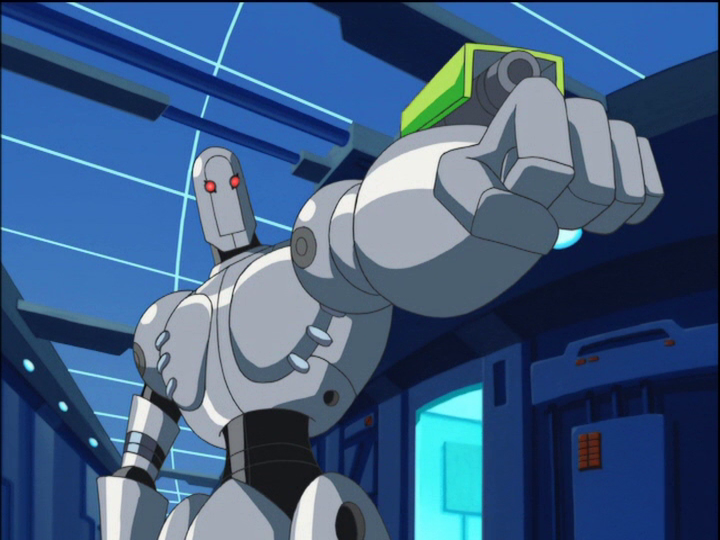
A logical reason for the unpopularity of the show would have to be the creative clash between the original pitched material and the ultimately delivered project.
Most of the directors and crew for this project had previously worked on shows such as “Animaniacs” and “Pinky and The Brain”, which only catered to children. The problem with this was that the show severely missed out on the critically acclaimed Bruce Timm art style, which was seen in the more popular DCAU shows like Batman and Batman Beyond. This iconic art style was hard to recreate by the more primary crew, which resulted in a sort of splotchy-looking animation for the show and did not draw the audience’s attention in a similar capacity.
The show was also mandated to only appeal to an age group of 6 to 11 years and most of the serious worldbuilding was lost in the writer’s room. Initially, the writers wanted Zeta to dwell on his past and build an appropriate internal character arc for the anti-hero, while they wanted Ro to be vigilant, well, because she does spend all of her time next to a somewhat maniacal assassin.
The show was supposed to deal with strong themes of existentialism and loneliness. Just think of the premise… with a killing machine that discovers free will, the implications on morality become much more complex and demand an older and more mature audience. The result of this literary disconnect was dire and the show failed to deliver a clear and concise motive for its characters.
Much like our protagonist Zeta, the show was made to fit the moulds of something it was much larger than. The way Zeta, a robot with a moral conscience, was forced to act as a merciless killing machine. The show with its rich philosophical themes was significantly watered down to a rudimentary and easily digestible piece, which is probably why it stands so widely forgotten.
But even with these shortcomings, The Zeta Project had gathered itself a very passionate fanbase, although not a large one. So what could be it? Why would the network cancel a show with decent ratings at the crux of its career? The answer lies hidden in the Warner Bros writer’s room.
Initially, Goodman had mapped out a four-year-long semi-serialised arc for the show. However, it was cancelled abruptly after its second season. The show was ordered to end on a cliff-hanger, just in case the network might renew it. Goodman once said in an interview with World’s Finest Online that this made him concerned about the future of the show: “I also knew that if we did come back, the network wanted to take the show in directions I didn’t want to go… I was wondering if it wouldn’t be best to let the curtain go down right then and there.”
One of these directions the network wanted to take was to write off the character of Ro to become a robot, which Goodman never agreed with. In another interview with Watchtower Database in the October of 2020, he revealed that the ultimate reason the show was never renewed was because of his resignation as showrunner.
He criticised the network’s kid-friendly demands and claimed that WB’s restrictions on fighting and evil villains had made it impossible for him to tell the story he had set out to. For example, several of the show’s episodes had natural disasters as the primary threats, because they could not write up proper antagonists. The final straw was WB’s ideas for season 3 to show Zee and Ro as public good guys solving crimes together. This, and the fact that the network could not find a replacement showrunner, ultimately led to its premature demise.
Although the show never did too well in the ratings and was built on an unstable plot structure, the fact that it still touched the hearts of many DCAU fans is testimony enough to the show’s exclusivity. Remembered by a few but still enchanting to anyone that comes across it, The Zeta project was never just a kid’s cartoon show, it was a retelling of the age-old ‘free will’ conundrum. A storyteller’s goldmine lost to the demands of the Box office, The Zeta Project is one such work of art.
